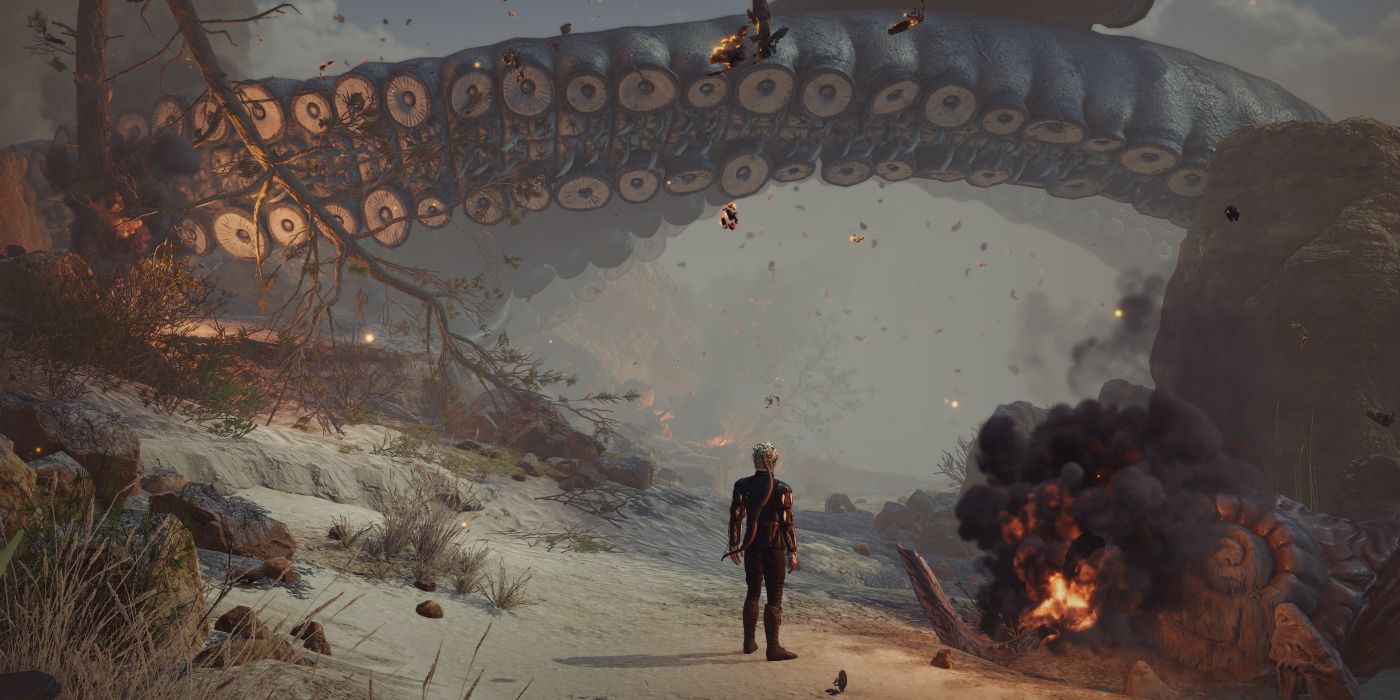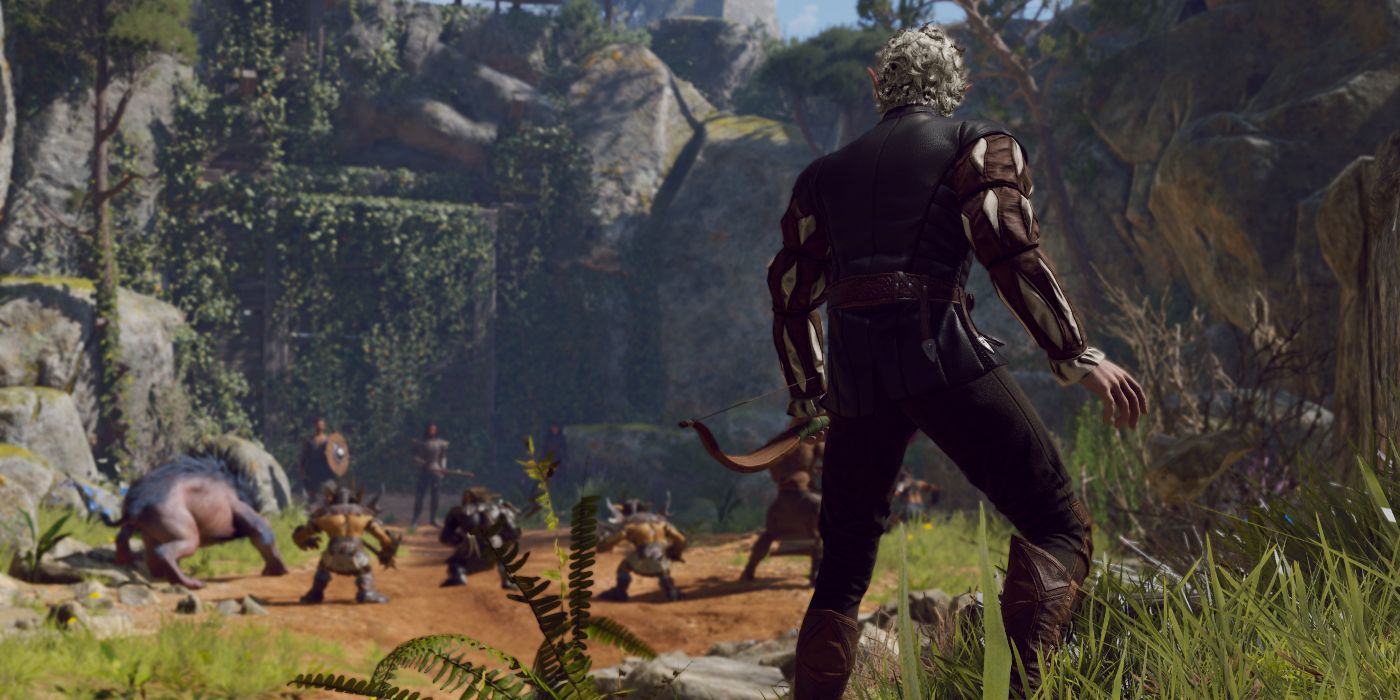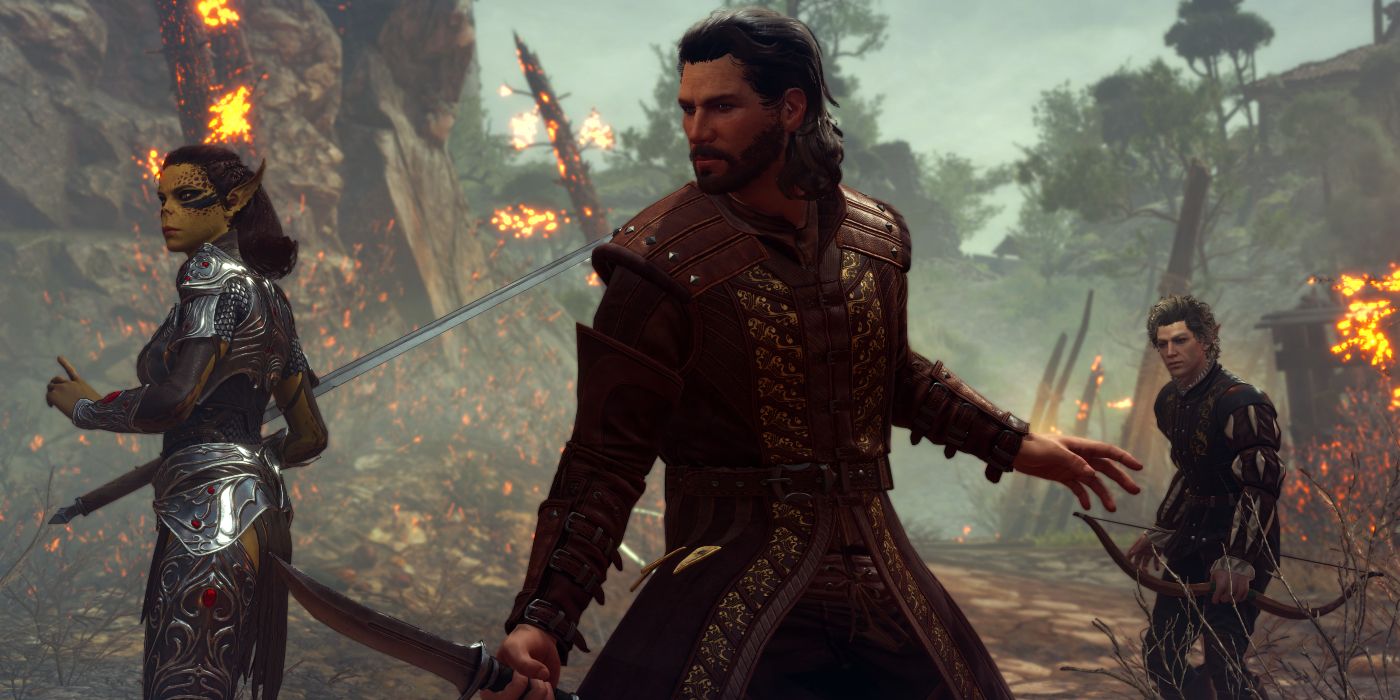Baldur's Gate III made its grand debut at PAX East 2020 with a nearly 90-minute presentation led by Larian Studios boss Swen Vincke. The sprawling demonstration showcased combat, story, characters, and systemic gameplay opportunities provided by the new game. Earlier this week though, we got to see a much longer version of the demo at a press event in New York City. While the behind-closed-doors demo was a hands-off affair, it showcased the potential of the Dungeons & Dragons-themed RPG that combines the lore and spirit of the original Baldur's Gate games with the foundation laid down by the acclaimed Divinity: Original Sin titles.
The original Baldur's Gate games were based on the D&D second edition rules, but that was twenty years ago, and times have changed. Baldur's Gate III is based on the fifth edition ruleset, with additional influence from Divinity: Original Sin. In fact, one could easily choose to see Larian's latest as the direct spiritual follow-up to that 2017 game-changer in addition to its obvious status as the next chapter in the Baldur's Gate saga.
Set 100 years after the end of the Bhaalspawn Saga, as chronicled in the previous titles in the series, Baldur's Gate III isn't a direct follow-up to the previous games, but it marks a fresh start for the series, but with one foot firmly rooted in the lore of the original titles. The Bhaalspawn Saga has been relegated to the realm of myth and legend to humans, but the more long-lived Dungeons & Dragons races have much clearer memories of what happened in those hallowed adventures. Speaking of races, Baldur's Gate III begins with, naturally, an extensive character creation process. A number of races are available, from halflings and humans to elves and vampires. Different combinations of races and classes have a significant impact on the player character, and will lead to different dialogue options with NPCs, whose personal prejudices and alignments will determine how they react to different players. In addition, Baldur's Gate III follows up on Divinity: Original Sin II's "Origin characters," pre-made heroes with their own personal goals and quests who can be chosen as player characters or will otherwise appear in the world as potential companions.
Even at this relatively early stage in development, Baldur's Gate III impresses with its bright and varied visuals. Character models are detailed and sport a variety of facial animation. It doesn't match the motion-captured heights of something like Uncharted, but it's a huge step beyond what was seen in Divinity: Original Sin II. In addition, the more ambitious camera system evokes the likes of Mass Effect with more dynamic angles than the traditional isometric view. Even in regular gameplay, the camera is much more dynamic than one might expect from the genre, and Swen even pulled it in close, effectively simulating an action/adventure-style over-the-shoulder view. The environments look amazing, with picturesque vistas, dynamic lighting, and lots of dense detail adding a real sense of life to what could otherwise be a static game board.
The biggest takeaway from our time witnessing Baldur's Gate III is how true the game is to the D&D experience, with particular attention paid to the glorious tension that comes with rolling a D20. In our demo, this manifested itself through a handful of severely unlucky die rolls. Like any RPG, the success or failure of pretty much everything in the game is ultimately determined by the roll of a 20-sided die. Any longtime D&D fan knows that even the best laid plans by the most min-maxed character builds can be foiled by one bad roll, and Baldur's Gate III really enjoys this element of the experience; rather than silently letting the random number generator run in the background, important die rolls become the center of the game's attention, and the crowd watching was hanging on every roll. Where Baldur's Gate III truly succeeds, however, is how the game deals with failure.
If players really want to game the system, there's nothing stopping them from from loading saves ad nauseum to pass every single D20 check they come across... But where's the fun in that? "There are things you'll never see if you don't embrace failure," says lead writer Adam Smith. "There are characters who you're going to have a different experience with if you fail in a persuasion, or if you fail to spot something about them." Passing a D20 check isn't a measure of winning and losing; it's just one way to play the game. What truly makes any tabletop game (or the human experience, for that matter) is how people continue moving forward after failing. In real life, there's no reset button, just different ways of moving forward, and Baldur's Gate III looks to capture that essence of adventure with every roll of the in-game D20. With so many variables at play, from character creation to dialogue options to the simple ability to kill pretty much any NPC on a whim, the odds of any two players having the same experience through any given playthrough are statistically unlikely, to put it lightly.
Baldur's Gate III Features Emergent, Systems-Based Gameplay
Like any D&D-inspired RPG, Baldur's Gate III features a complex combat system, with opportunities for emergent interactions between systemic elements. At times, it almost resembled a D&D take on The Legend of Zelda: Breath of the Wild, with so many different ways to tackle any given problem. Viewed from different angles, the game resembles any number of tactical RPGs, from XCOM to Final Fantasy Tactics and – of course – Divinity: Original Sin. The systems-based interactions range from the obvious, like dipping a bow into an open flame to gain access to flaming arrows, to the delightfully insidious, like looting the weapons off static skeletons before they are revived as undead warriors. This freedom to mess around with the game is a defining characteristic within combat, puzzles, exploration, and just interacting with NPCs. The level of depth Larian Studios is going for is simply staggering.
If there was one moment in the demo that completely captured the Baldur's Gate III experience, it was when Swen attempted to knock a powerful boss enemy into a pit of giant spiders. Most of the party was facing off against the demon boss, while his lead character, the vampire elf Astarion, was sneaking across the ceiling beams above, which really showcased the vertical nature of many combat opportunities in the game. Astarion lined up an explosive arrow that was intended to send the demon into the pit below and let loose the projectile like a D&D version of the Green Arrow. Alas, his aim was arguably too good, as instead of sending the boss to his doom, the force of the explosion actually launched him all the way across the chasm; he landed safely on the other side of the pit, with only minor injuries. After a couple of turns trying to fight the boss on even terms, the party was wiped out. It was an unceremonious end to the demo, but a delight to behold and a quintessential Dungeons & Dragons moment.
Baldur's Gate III aims to be the next great CRPG. With Divinity: Original Sin II, Larian Studios moved the needle for the genre, but by taking on the Baldur's Gate license, the developer clearly has their sights set on become the de facto industry leader in the computer RPG space. Based on their confidence with this early extended look at the game, we're confident Baldur's Gate III has what it takes to go the distance, live up to its pedigree, and become the next great Dungeons & Dragons adventure.
Baldur's Gate III enters Early Access in 2020 and will release on PC and Google Stadia.



